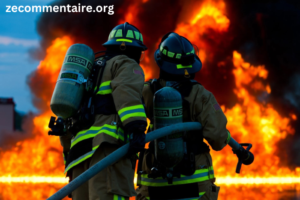Emergencies strike in a moment. Being ever ready is the motto of a good emergency response team, be it a team handling general emergencies or just electrical risks. Electricity related incidents are very hazardous, often causing serious injuries or even death. Therefore, it is of prime importance for an electrical emergency team to be trained in electricity safety.
This training provides basic knowledge and skills needed for effectively controlling electrical hazards. Electricity really has a number of risks; they can range from residential fires to industrial accidents. Its handling should therefore be specific and specialized in its own right. Training prepares the responders with all the necessary precautions and procedures, helping them to navigate such dangerous surroundings.
Reasons Electrical Safety Training is Important
There are a number of reasons why electrical safety training is very important. First, it equips the team members with the capability of detecting an electrical hazard in a very short duration. This helps to prevent adding risk to an already hazardous situation. Knowledge on some of the warning signs of potential electrical hazards will also help detect issues before they occur.
Electrical safety training also ensures that the responders are able to properly use protective equipment. Critical tools in the arsenal include specialized gear such as insulated gloves and voltage detectors. Proper knowledge in their use can be the difference between a critical situation and a catastrophe.
Important Aspects of Effective Training
a. Hazard Recognition
Training begins by teaching workers the ability to recognize the hazard that electricity poses. This will include exposure teaching, such as exposed wiring, damaged equipment, and hazardous areas of work where the electrical systems can be compromised.
b. Risk Assessment
Upon identifying the hazard, the first responders in a situation must now carry out a risk assessment. This entails an understanding of the severity levels of the electrical hazard and finding the best way out of how to mitigate them without counteracting the safety measures.
c. Safety Procedures
Another important issue that is addressed in the training is the implementation of standard safety procedures. This ranges from setting the safe distances from possible electrical sources to making the right evacuations in cases of electrical fires.
d. Safety Equipment Utilization
The response teams are also trained on how best to handle the different types of safety equipment—from personal protective gear to tools devised for safe handling or cutting off the electrical supplies, among others.
e. Emergency protocols
Finally, the first responders will learn specific protocols for different scenarios, like the way to approach victims who have been struck by electrical shocks, or how to evacuate people safely from areas that pose high electrical risks.
Preparedness for Crisis Situations
The ultimate goal of electrical safety training is not only to save an emergency responder from injury, but to enhance his (or her) effectiveness during crises. With such preparedness, teams work efficiently and effectively, with utmost confidence in safety from electrical hazards.
Conclusion
Electrical safety training is part and parcel of the entire regimen of the emergency response team. This is not just about adherence to legal requirements, but also about supporting the common interest in safety and the increased capability to save lives when most needed. Just as advances in technology have changed the nature of emergencies, so too must training and preparedness evolve in those first on the scene.






